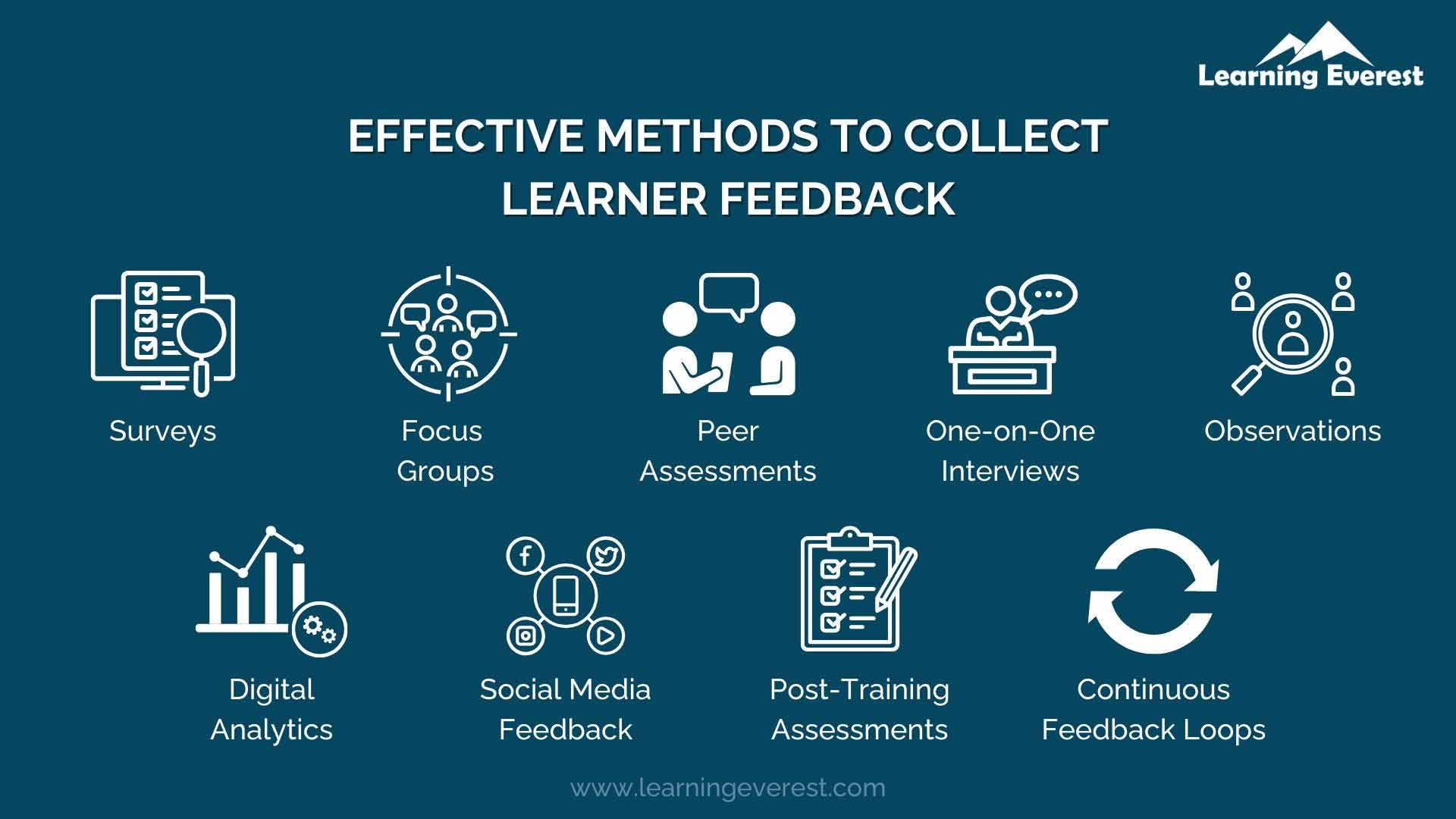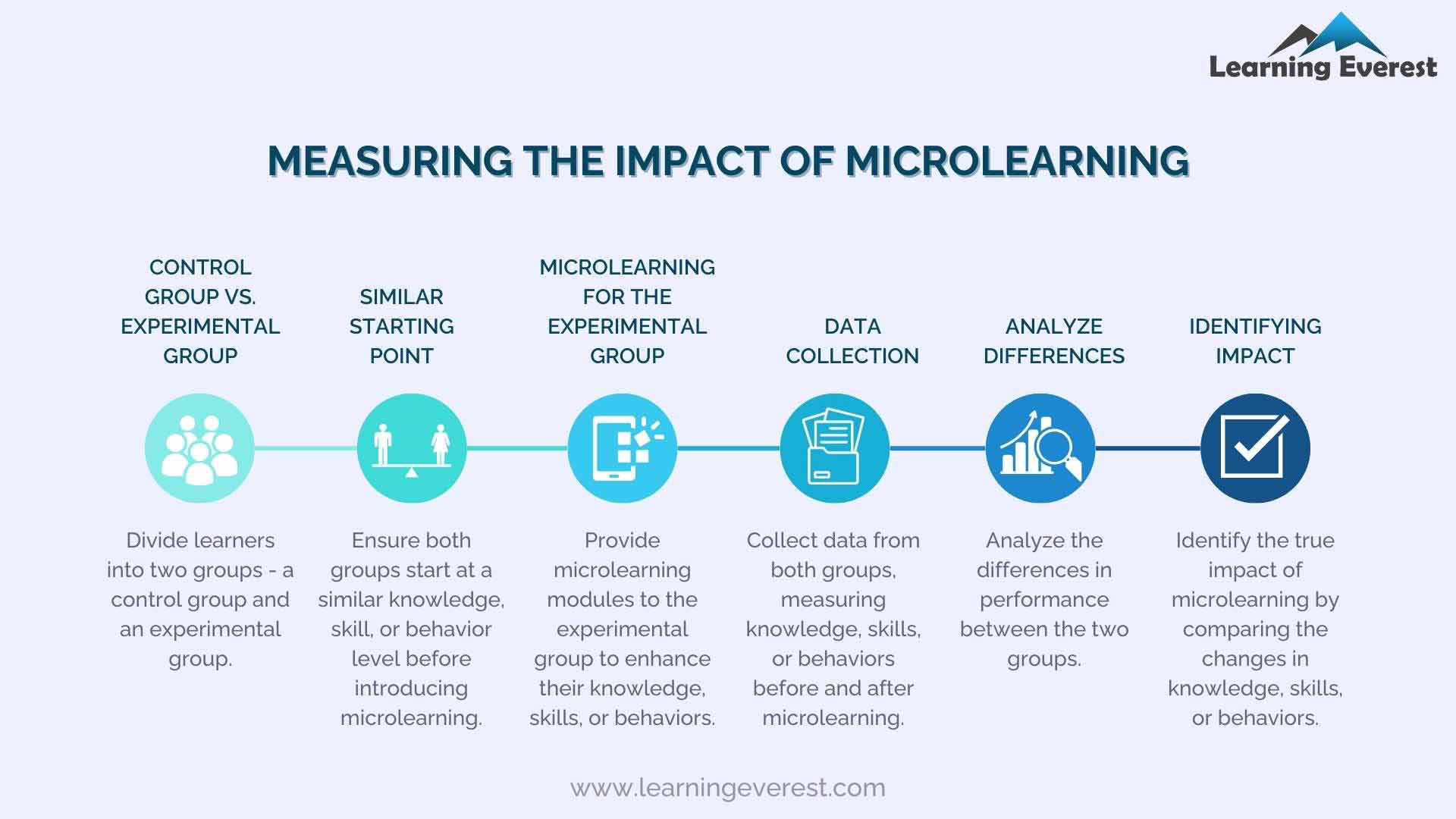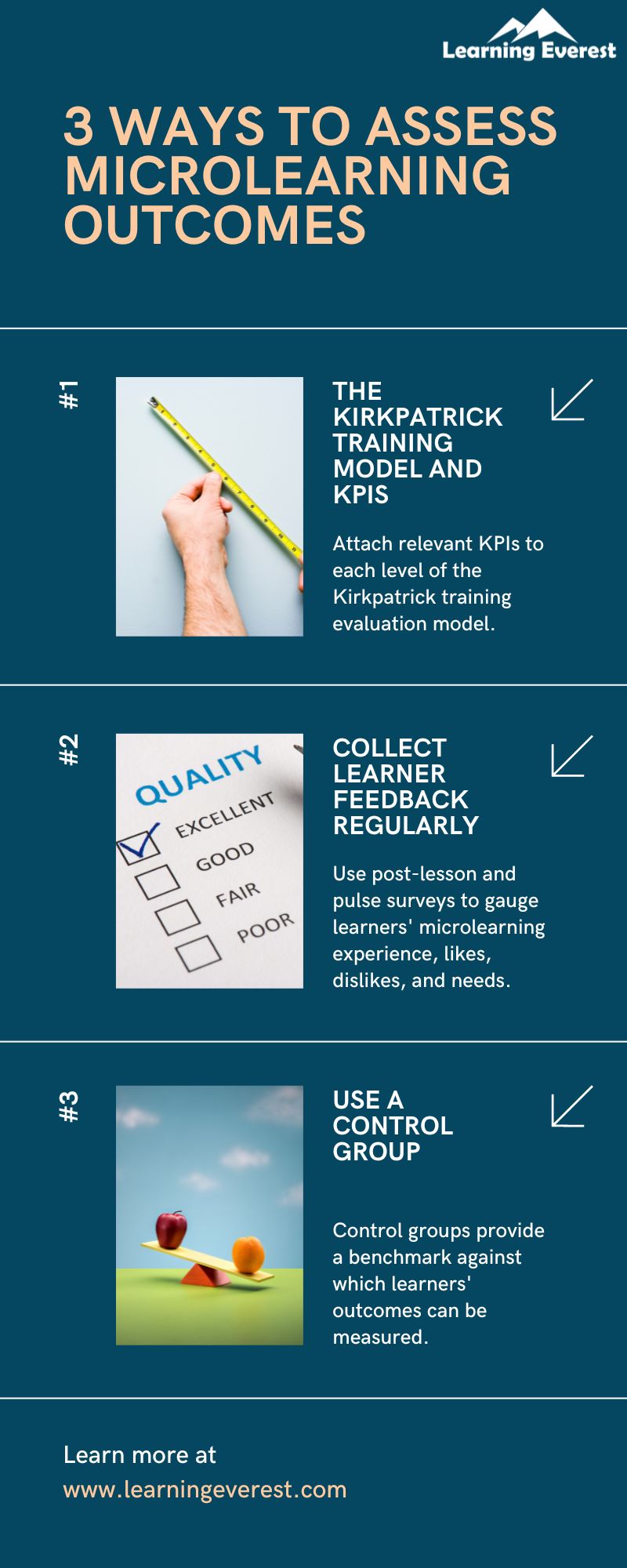The trick to constantly improving your microlearning modules to drive business growth is to consistently measure microlearning outcomes. This principle applies to all learning, but microlearning’s emphasis on impact and goals makes it an approach that is especially concerned with outcomes. This is because one of the core features of microlearning is the measurability of changes that occur as a result of learning. An effective microlearning course clearly delineates the learning objective and successfully achieves it. However, measuring outcomes is not always a straightforward task. Here are 3 efficient ways to measure microlearning outcomes.
Table of Contents
- 1. Kirkpatrick Training Evaluation Model and KPIs to measure microlearning outcomes
- 2. Collect Learner Feedback Regularly to measure microlearning outcomes
- 3. Compare Learners’ Performance Against a Control Group to measure microlearning outcomes
- Infographics
- Conclusion
- Frequently Asked Questions (FAQs)
- What is an example of microlearning?
- What is microlearning and its benefits?
- What are the principles of microlearning?
1. Kirkpatrick Training Evaluation Model and KPIs to measure microlearning outcomes
The Kirkpatrick model is a training effectiveness evaluation model that has been around for decades. It is a go-to for businesses to measure learning outcomes on different levels with the primary purpose of determining training ROI. However, the parameters it measures give an overall measure of how impactful the training was.

Kirkpatrick Training Evaluation Model and KPIs to Measure Microlearning Outcomes
Learning outcomes are measured at 4 levels. The levels you will need to assess for your microlearning outcomes will depend on the nature and objective of your course. The 4 levels are as follows:
Level 1 – Reaction
Reaction refers to learners’ response to and experience with the course. At the reaction level, variables like course relevance, enjoyment, and learner satisfaction are explored.
Level 2 – Learning
The learning level seeks to assess whether the learning objectives are met. Pre-tests, post-tests, knowledge checks, quizzes, activities, etc. are ways to measure training effectiveness at this level.
Level 3 – Behavior
At the behavior level, the goal is to evaluate whether the learning leads to actionable changes in learners. Measuring the outcomes at this level can often take a few months since learners need to first get comfortable with the new skills or information they have acquired.
Level 4 – Results
Finally, at the results level, businesses evaluate whether the new learnings helped meet larger business objectives.
When using the Kirkpatrick model for measuring microlearning outcomes, it is helpful to establish some Key Performance Indicators (KPIs) so you have a framework for assessing each level. For example:
- Learner engagement is a good indicator of effectiveness at the reaction level (level 1)
- The frequency of right and wrong responses can indicate the quality of learning (level 2)
- An increase in company revenue would reflect that the desired results have been met (level 4)
2. Collect Learner Feedback Regularly to measure microlearning outcomes
Another way to gauge microlearning outcomes is to ask the learners themselves. Learners can offer valuable feedback about what works and what doesn’t so that you can refine aspects of the course for better outcomes.

Effective Methods to Collect Learner Feedback
The best way to collect feedback is to add a short survey at the end of the course itself.
- Stick to short, simply worded questions with multiple choices. If possible, you can even make the choices visual instead of verbal (for example, stars or smiley faces instead of plain circles or boxes with text)
- Don’t add more than 5-7 questions to the survey so that learners answer authentically instead of out of obligation
Apart from these post-course surveys, you can also conduct routine pulse surveys for a deeper insight into learners’ experiences and needs. Supplementing post-lesson feedback with pulse surveys will allow you to evaluate the overall state of microlearning outcomes in your organization.
In pulse surveys, you can collect responses about the following:
- Learner reaction to any recent changes and updates made to microlearning modules
- Learners’ thoughts and attitudes about the effectiveness of modules
- Features the learners would want in future courses
- Features learners would prefer having removed from future courses
- Impact of learning activities on learners’ professional development
3. Compare Learners’ Performance Against a Control Group to measure microlearning outcomes
Lastly, you can compare microlearning outcomes with a control group that does not receive any intervention.
Control groups are a great way to verify whether improvements or declines in performance take place due to new learning activities or external factors. Having a benchmark to compare learners’ performance against allows organizations to determine if their microlearning outcomes are significant. With such data, businesses can then make better decisions about learning resource allocation in the future.

Measuring The Impact of Microlearning
However, control groups are not always necessary. They are most effective when you have enough people to spare. For instance, in a smaller organization, dividing learners into two groups might affect overall productivity and even slow down your growth trajectory. Nonetheless, when the option is available to you, a control group will provide extremely valuable insight into the outcomes of your microlearning programs.
Infographics

Assess Microlearning Outcomes – 3 Effective Ways Infographics
Conclusion
When measuring microlearning outcomes, businesses should ensure as much specificity as possible. Using training evaluation models such as the Kirkpatrick model can help guide this process. Apart from structured approaches, it is also imperative that frequent learner feedback is collected so that you know their needs and can act upon them as soon as possible. Improving courses will also build learner trust and drive greater engagement.
Lastly, for firms that have the means, a thorough training evaluation process using a control group can offer rich insight into both, the good and the bad. Due to its bite-sized and focused nature, microlearning has a very high potential for precise measurability and organizations should bank on it as much as possible. You can also consider reading this article.
Frequently Asked Questions (FAQs)
What is an example of microlearning?
An example of microlearning could be a short video tutorial on how to use a specific feature in a software application.
What is microlearning and its benefits?
Microlearning has several benefits, including improved retention, increased engagement, and the ability to fit learning into busy schedules.
What are the principles of microlearning?
The principles of microlearning include delivering content in small, focused chunks, making it easily accessible, and providing immediate feedback to learners.





